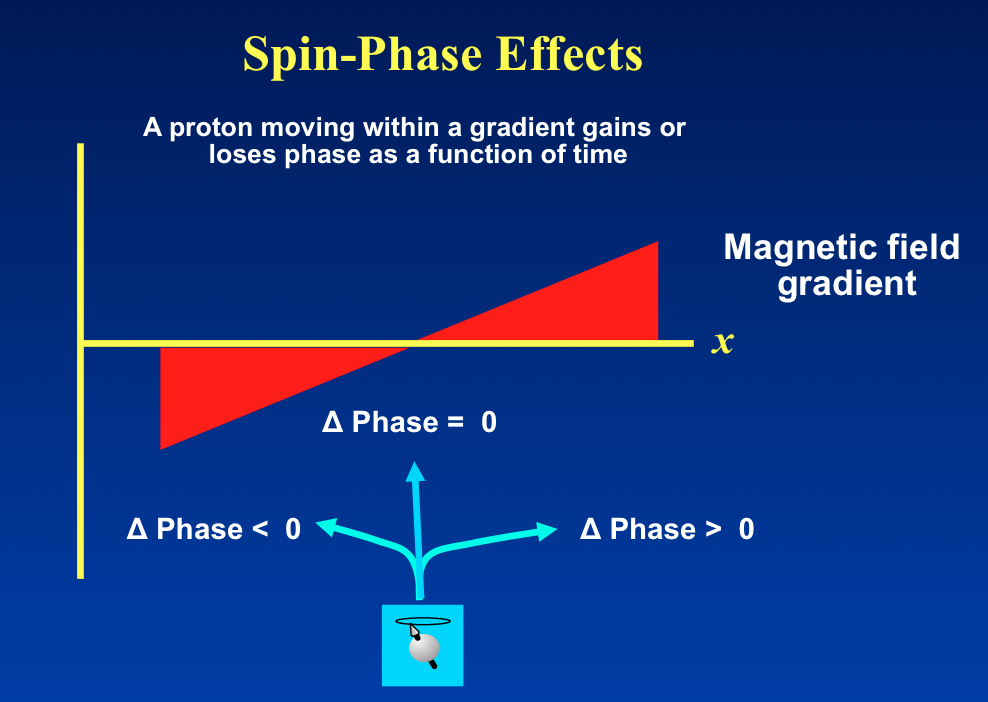|
Spin-phase effects refer to changes in precession angle (phase) that protons undergo when they move within a gradient. An important function of magnetic field gradients is to spatially encode the MR signal. If a proton changes position while these gradients are applied, it will gain or lose phase compared to stationary tissue.
In routine imaging, spin-phase effects are primarily responsible for signal loss for in-plane flow and in regions of vascular turbulence. Not purely a destructive phenomenon, spin-phase effects can also be quantified and used to create MR angiograms and measure vascular or CSF flow. |
To gain appreciation for the magnitude of spin-phase effects, let us calculate the phase gained by a proton moving through a magnetic field gradient. For simplicity, we will assume that the proton moves at constant velocity (v) for time (t) within a gradient having constant magnitude G. The position of the proton will then be x = vt and its resonant offset frequency, f, will be a linear function of time that is given by
f = γGx = γGvt
Because total phase gain is the sum of incremental frequency changes over time, the net phase shift of this proton, Φ(t), can be written
Φ(t) = ∫ f dt = ∫(γGvt) dt = γGv ∫ t dt = ½γGvt²
This equation thus demonstrates an important (but nonintuitive) concept: the phase shift experienced by a moving spin will be proportional to its velocity, the strength of the applied gradient, and the square of the length of time it moves within that gradient.
Advanced Discussion (show/hide)»
No supplementary material yet. Check back soon.
References
Hahn EL. Detection of sea-water motion by nuclear precession. J Geophys Res 1960; 65:776-777. (In addition to spin echoes, Hahn also discovered gradient echoes that occurred when a gradient field was reversed described in this paper. He even went further to show how velocity could be measured based on gradient induced phase shifts, the foundation of modern phase-contrast MRI.)
von Schulthess GV, Higgins CB. Blood flow imaging with MR: spin-phase phenomena. Radiology 1985; 157:687-695.
Hahn EL. Detection of sea-water motion by nuclear precession. J Geophys Res 1960; 65:776-777. (In addition to spin echoes, Hahn also discovered gradient echoes that occurred when a gradient field was reversed described in this paper. He even went further to show how velocity could be measured based on gradient induced phase shifts, the foundation of modern phase-contrast MRI.)
von Schulthess GV, Higgins CB. Blood flow imaging with MR: spin-phase phenomena. Radiology 1985; 157:687-695.
Related Questions
Dr. Elster, I've been told you don't like or use the term 'flow void'. Why is that?
Dr. Elster, I've been told you don't like or use the term 'flow void'. Why is that?



